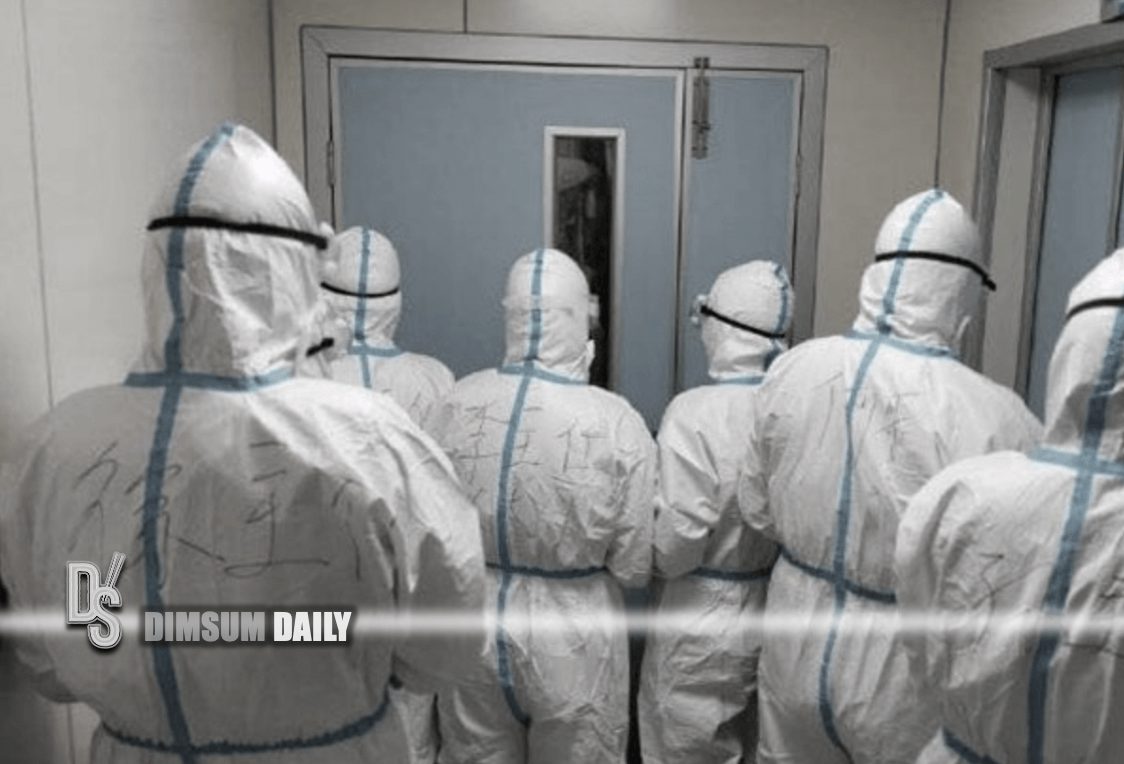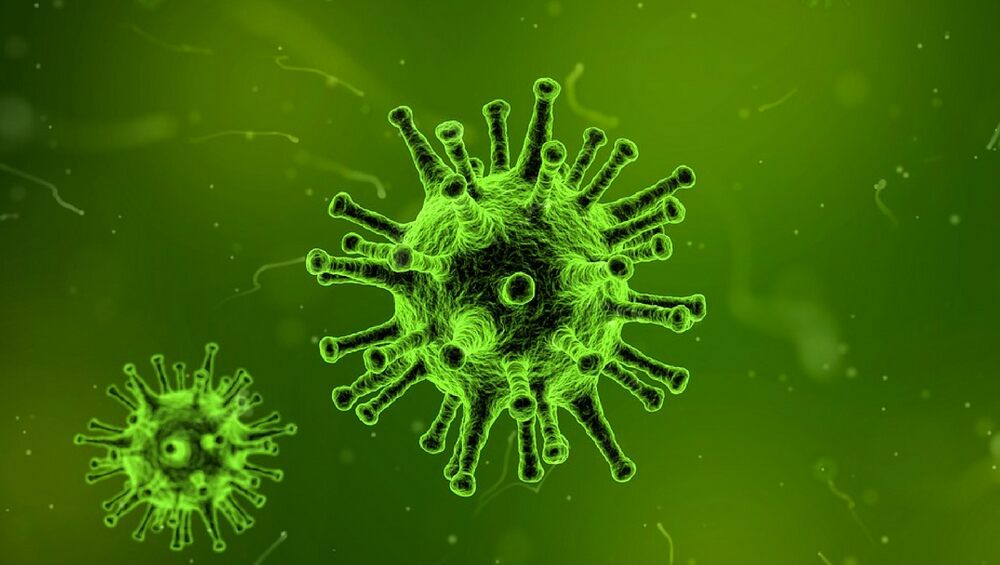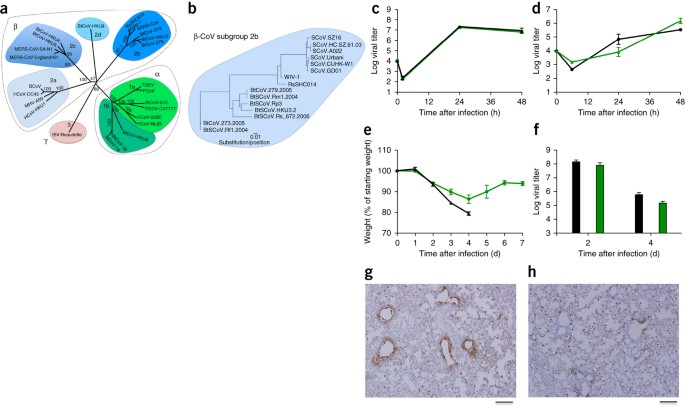From dimsumdaily.hk:
Russian scientists believe America created the Wuhan coronavirus to sabotage China
2nd February 2020 -(Russia) Acccording to William Ebbs, several Russian scientists believe America created the Wuhan coronavirus to sabotage China in order to make tonnes of money by subsequently coming up with an antidote or vaccine.
["the experimental Remdesivir, antiviral medication" "Can you apply this treatment to ALL people infected with the coronavirus" "Yes"]
Russian media sources suggest the novel disease, provisionally known as 2019-nCoV, could be an American made bio-weapon designed to sabotage China.The claims have had significant airtime on mainstream Russian media and could be part of Vladimir Putin’s efforts to discredit U.S interests in the region.
“The Chinese believe the coronavirus is created by the Americans,” the popular Komsomolskaya Pravda reported, citing as proof that the virus was “genetically shaped in the American laboratories,” the claim that “all the infected are Asians!” and there are “no Europeans.”
Russia’s oldest state-owned news agency, RIA Novosti, reported, “The spread of coronavirus might have been a sabotage, the expert [Nikulin] thinks.”
The RIA Novosti report, citing Nikulin, speculated that U.S. diplomatic staff may have “delivered” the dangerous cargo from the “American lab” to Wuhan.
Leonid Savin, featured as a foreign policy expert at the shadowy Strategic Culture Foundation, speculated that the Bill and Melinda Gates Foundation may have helped finance creation of the “coronavirus bioweapon.” We reported this conspiracy theory as it was based on a patent filed by the Pirbright Institute in England. However, in denial of the allegation, Matthew Frieman, a coronavirus researcher at the University of Maryland, was quoted saying that “the sequencing was done at the CDC during the SARS outbreak and they were the ones that filed the patent.”The other supposedly related patent is for a mutated form of avian infectious bronchitis virus (IBV), which infects poultry, but not people. The patent was filed by the Pirbright Institute, a research institute in the UK that aims to prevent and control “viral diseases of livestock.”
Vladimir Zhirinovsky, the leader of the Liberal Democratic Party and a popular veteran politician, told Moscow radio that Americans were “surely” behind the outbreak. He suggested pharmacists were gaining billions while the U.S. military reaped an “opportunity to test” weaponizing the virus.
Is the Coronavirus an American Bio-Weapon?
The recent tensions between the United States and China are well known. The conflict is seen as a great power struggle between an established superpower and its burgeoning rival. The conflict’s scope ranges from a trade war to disputes over the South China Sea and 5G internet.
Some in Russia believe these tensions have pushed the United States’ government to take drastic actions to achieve its goals.
Igor Nikulin, a former member of the U.N. Commission on Biological and Chemical Weapons, claims he was contacted by Chinese colleagues who believe the coronavirus is man-made.
Nikulin states the following:
IT ALL LOOKS LIKE SABOTAGE. FIRST OF ALL, THIS IS THE CITY OF WUHAN – IT’S THE CENTER OF THE COUNTRY, A MAJOR TRANSPORTATION HUB, PLUS NOW THE CHINESE NEW YEAR – HUNDREDS OF MILLIONS OF CHINESE WILL TRAVEL AROUND THE COUNTRY TO RELATIVES, ACQUAINTANCES, AND SO ON.
Nikulin goes on to make an even more stunning (and perhaps implausible) suggestion — that American corporations may have created the Wuhan coronavirus to make money off a cure.
He states:
IT CAN BE BENEFICIAL FOR AMERICAN CORPORATIONS THAT ARE DEVELOPING THESE KINDS OF NEW DISEASES JUST FOR PROFIT. OR MAYBE FOR THE AMERICANS THEMSELVES, BECAUSE AMERICA IS THE ONLY COUNTRY THAT HAS 400 MILITARY BIOLOGICAL LABORATORIES AROUND THE WORLD, NOT ONLY AROUND RUSSIA BUT ALSO AROUND CHINA, IN MALAYSIA, IN INDONESIA, IN THE PHILIPPINES – THE US MILITARY IS EVERYWHERE.
Nikulin isn’t the only notable Russian spouting these extreme claims. Politicians are also using the opportunity to bash America. Vladimir Zhirinovsky, a leader of the Russian LDPR, has publicly stated that America could have caused the crisis to undermine Chinese economic power while making tons of money in the process.
He said:
Some in China take these suggestions seriously. But according to Hu Xijin, an editor at the Global Times, most don’t believe it.PHARMACISTS WILL BECOME BILLIONAIRES IN 2020, AND EVERYONE WILL QUICKLY FORGET EVERYTHING.
Russia Is Taking Drastic Action Against The Coronavirus Threat
Russian Prime Minister Mikhail Mishustin has ordered the closure of Russia’s far eastern border to stop Wuhan coronavirus from spreading into the country. 16 of the 25 crossings between the two countries were closed by midnight on 31st January.
Russia reported its first two cases of coronavirus on Friday and said the infected people were Chinese citizens who had been isolated.

Russian scientists believe America created the Wuhan coronavirus to sabotage China - Dimsum Daily
2nd February 2020 -(Russia) According to William Ebbs, several Russian scientists believe America created the Wuhan coronavirus to sabotage China in order to make tonnes of money by subsequently coming up with an antidote or vaccine. Russian media sources suggest the novel disease, provisionally...www.dimsumdaily.hk





 . There are a lot of things we don't know.
. There are a lot of things we don't know.




